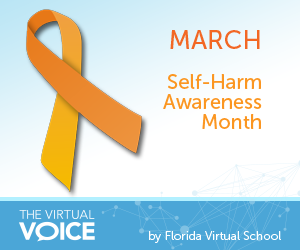Self Injury Awareness
Self-Injury Awareness Month
By Amy LaGrasta on March 24th, 2014
 March is Self-Injury Awareness Month.
March is Self-Injury Awareness Month.
Each year, approximately 2 million cases of self-injury are reported annually in the United States. One in five females and one in seven males engage in self-injury. Ninety percent of people who engage in self harm begin during their teenage or pre-adolescent years.[1]
Self-harm can be a way of coping with problems. It may help express feelings that can’t be put into words, serve as a distraction from life, or release emotional pain. Afterwards, one might feel better—but only for a little while. Although self-harm may give temporary relief, it comes with a cost. In the long term, it causes far more problems than it solves. By not learning healthy ways to deal with emotional pain, it increases risk for bigger problems down the line, including major depression, drug and alcohol addiction, and suicide. Continue reading
Cut it Out: Self-Injury Awareness
By Amy LaGrasta on March 12th, 2013
 Self-injury is the deliberate infliction of damage to your own body, and includes cutting, burning, hair pulling, and other forms of injury.
Self-injury is the deliberate infliction of damage to your own body, and includes cutting, burning, hair pulling, and other forms of injury.
Experts estimate that about 4 percent of the population practices self-injury, almost equally divided between male and female. According to researchers, recent studies of high school and college students put the number at approximately one in five.
While cutting can look like attempted suicide, it is most often not the intent, rather an unhealthy way to deal with emotional stress. Most people who self-harm do it as a way to regulate mood, escape feelings, cope with stress, express pain, or punish themselves. People who hurt themselves in this way may be motivated by a need to distract themselves from inner turmoil, or to quickly release anxiety that builds due to an inability to express intense emotions. Continue reading
